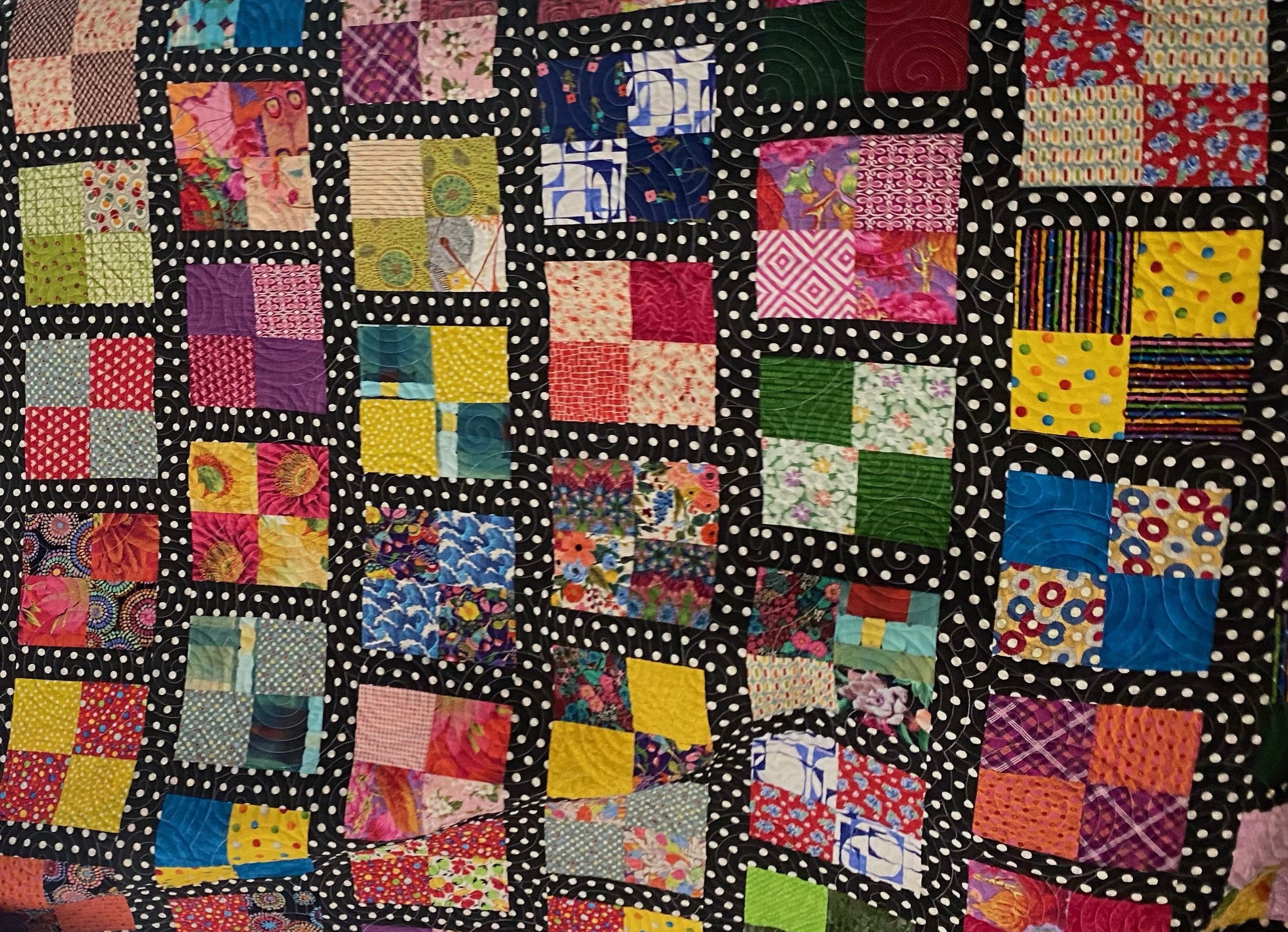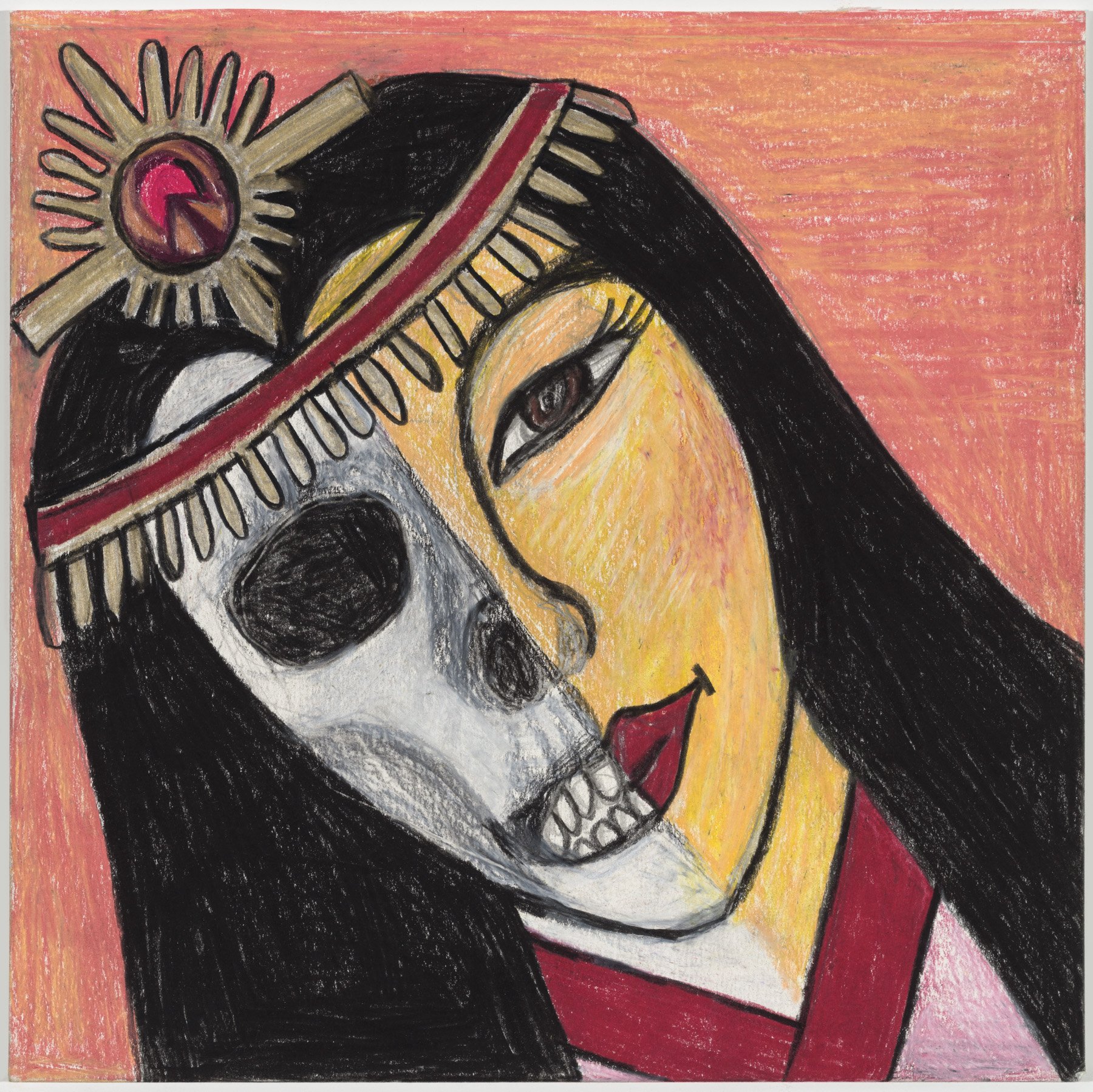Rebecca Goyette
PARLOR TRICKS: A Self-Service Social Space
Collector’s First Look Preview: September 7, 11 am - 5 pm
Opening Night: September 7, 5 - 8 pm
Regular Show Days: September 8-12, 11 am - 8 pm
SPRING/BREAK ART SHOW
SEPTEMBER 7 - 12, 2022
625 Madison Ave. New York, NY
ROOM 1165

PARLOR TRICKS includes drawings, paintings, performance, and sculpture speaking to Goyette’s oeuvre, a psychosexual romp through history, mythology, religion, and personal experience. A mismatched bricolage of charged objects and ephemera from her home and studio including colorful abstract quilts made with her mother alongside altars to historic and fictional future-forward god/ess power immerses visitors in the personal world of the artist.
Self portrait as social space, a free love romp in the parlor conjures pre-technology entertainments, the telling of stories and jokes, parlor tricks with household objects, perhaps “magic” or sleight of hand. With ribald humor, Goyette’s Parlor Tricks toy with the term’s send up of badly behaved politicians and preachers, displacing them with self-possessed god/ess authority.
THE PEOPLE'S PARLOR HAPPENINGS //
THE PEOPLE'S PARLOR HAPPENINGS //
CERAMICS
The Triple Goddess is the merger of the mother, maiden and crone. In Goyette’s version, realized in ceramic, the viewer bares witness to a self- portrait entwined with the artist’s mother. Imagining the dyad in triplicate, the sculpture binds the figures both by history and present: the landscape of the maiden is the artist’s childhood backyard, the mother is represented by a quilt pattern, the crone by Goyette’s mother’s view from her new home in New York City. The work undoubtedly captures the artist’s feelings about generations and ancestry, while reconciling this past with her present.
TRIPLE GODDESS
2022, Ceramic sculpture 17 x 14 x 15 in (43.2 x 35.6 x 38.1 cm)
INANNA AND THE PLAGUE DOCTOR
2022, Ceramic sculpture 7x 5x16 in. and 8x7x18-1⁄2 in
Inanna and the Plague Doctor situates two subjects, each from different contexts, places, and time periods, in an unfixed position, leaving the relationship between them open-ended. Inanna (also known as Ishtar), the ancient Mesopotamian goddess of love, sex, and beauty, is juxtaposed, as the work’s title suggests, with a plague doctor.
The former is stark naked while the latter is adorned in the full medical regalia of that position. Standing side-by-side, the scene is imbued with a sense of ridiculousness. Power dynamics are inherently in question, but who has the upper hand is left for the viewer to decide.
DYMPHNA
In 7th century Ireland, Dymphna was born to Damon the Petty King of Oriel and her mother, a devout Christian. According to tradition, Dymphna took a vow of chastity at age 14. Soon after, her mother died and her father, devastated by his wife’s death,
fell prey to mental illness. The King’s counsel encouraged him to remarry, and he agreed to do so, but only if he could find a woman just as beautiful as his first wife. After a wide search, Damon began to desire the daughter who closely resembled her mother. When Dymphna learned of her father’s desires, she fled, taking refuge in Geel, Begium, where she used her father’s wealth to build a hospice for the poor and sick in the area.
Through her use of his coins, he was able to trace her whereabouts and with his men, the king hunted her down. Dymphna’s resistance to this group incited Damon to raise his sword, and the king furiously decapitated his 15 year old daughter. Around 620 AD, Saint Dymphna was martyred, and she became known as the patron saint of those suffering psychological problems. In 1349, a church honoring St. Dymphna was built in Geel; in time, so many pilgrims came for healing that the church couldn’t handle the numbers of seekers.
In a show of community, the townspeople of Geel took them in as boarders in their homes and this started a tradition of a strong healing community in service of those with mental health issues in Geel that lasts to this day.
2022, Ceramic sculpture, 13 x 12 x 18 in (33 x 30.5 x 45.7 cm)
Fortunacopia
2022, Handbuilt ceramic scuplture
QUILTS
Collaboration is intrinsic to Rebecca Goyette’s practice.
This ethos extends into her recent work, which includes a quilt she made with her mother, Louise, whom Goyette recently relocated to New York from New Hampshire. She bought her mom a sewing machine as a way to get her back into a creative headspace and together, they craft, but this time spent together is equally, if not more important, than the project at hand: “We chat, we laugh, we have snacks and cold drinks, and take breaks and sit in her garden.”
Shelter and Goyette are proud to include Louise’s handmade quilts in this exhibition, in addition to their collaborative work.
Louise Goyette, Kaleidoscopic Abstraction, 2010, Handmade Quilt
Rebecca and Louise Goyette
It’s A Movie, 2022, Handmade Quilt
Louise Goyette, Fiesta, 2017, Handmade quilt
Louise Goyette, Scraps of Memories, 2008, Handmade Quilt
PAINTING
Missile Dick Chick Visits Mom, 2006, Acrylic on canvas, 60 x 72 in.
DRAWINGS
Honoring Ancestors, 2020, Watercolor pencil on paper, 12 x 9 in.
Lobsta Queen on Sigil Quilt, 2020, Watercolor pencil on paper, 12 x 9 in.
Lobsta Boudoir, 2020-2021, Watercolor pencil on paper, 30 x 22.5 in.
The (Lobsta) Scream, 2020, Watercolor pencil on paper, 12 x 9 in.
O, Fortuna, 2019, Watercolor pencil on paper, 18 x 24 in.
Virgin Mary, 2020-2021, Watercolor pencil on paper, 12 x 12 in.
Fortuna, 2020-2021, Watercolor pencil on paper, 12 x 12 in.
Oshun, 2020-2021, Watercolor pencil on paper, 12 x 12 in.
Freya, 2020-2021, Watercolor pencil on paper, 12 x 12 in.
Inanna, 2020-2021, Watercolor pencil on paper, 12 x 12 in.
Venus, 2020-2021, Watercolor pencil on paper, 12 x 12 in.
Triple Goddess, 2020-2021, Watercolor pencil on paper, 12 x 12 in.
Étain, 2020-2021, Watercolor pencil on paper, 12 x 12 in.
Persephone, 2020-2021, Watercolor pencil on paper, 12 x 12 in.
Artemis, 2020-2021, Watercolor pencil on paper, 12 x 12 in.
Izanami, 2020-2021, Watercolor pencil on paper, 12 x 12 in.
ABOUT
Rebecca Goyette is a NYC-based visual artist. Her interdisciplinary work combines ceramic sculpture, drawing, costumery, and performative film/video to explore the power dynamics inherent to gender and sexuality, celebrating sex positivity, while simultaneously examining the psychology of sexual violence. Goyette embodies a broad range of characters in an ongoing series of psychosexual scenarios, acting as both director and protagonist. As Ghost Bitch, she recounts the psychosexual Puritan dramas of her direct ancestor, Rebecca Nurse, hanged as a Salem witch and in other work she enacts the mating dance of a lobster as a costumed Lobsta Queen provocateur. Inspiring adult play, ancestral healing and social critique, Goyette’s ceramic God/ess Power figures are displayed in bizarro Americana dioramas and altars.
Goyette’s work has been included in solo shows at Shelter Gallery, NYC, Freight & Volume, NYC, Huam-Grok Gallery, Seuol, Korea, Spektrum: Art, Science & Community, Berlin,Galerie X, Istanbul and Jersey City Museum and group shows/performances at Kyung-In Museum of Art, Seoul, Korea, Museum of Sex, NYC, Whitney Museum of Art, NYC, KARST, Plymouth, England and Gallery Poulsen, Copenhagen, Denmark. Goyette’s work has been reviewed by Arté (European television), Art News, Vice Magazine, Hyperallergic, Huffington Post and Ms. Magazine among others. Goyette teaches multi-disciplinary courses including video, performance art, sculpture and drawing/painting and lectures onperformance/film/video and activist practices in modernist and contemporary visual art. Goyette has taught and lectured for the Museum of Modern Art, Brooklyn Museum of Art, School of Visual Arts,and Pratt Institute. She has curated exhibitions and events for the Museum of Modern Art’s Cullman Education Center Gallery, Museum of Sex, Museum of Moving Image/Kaufman Studios, NYC, National Arts Club, NYC and SPRING/BREAK Art Show, NYC.
rebeccagoyette.com























